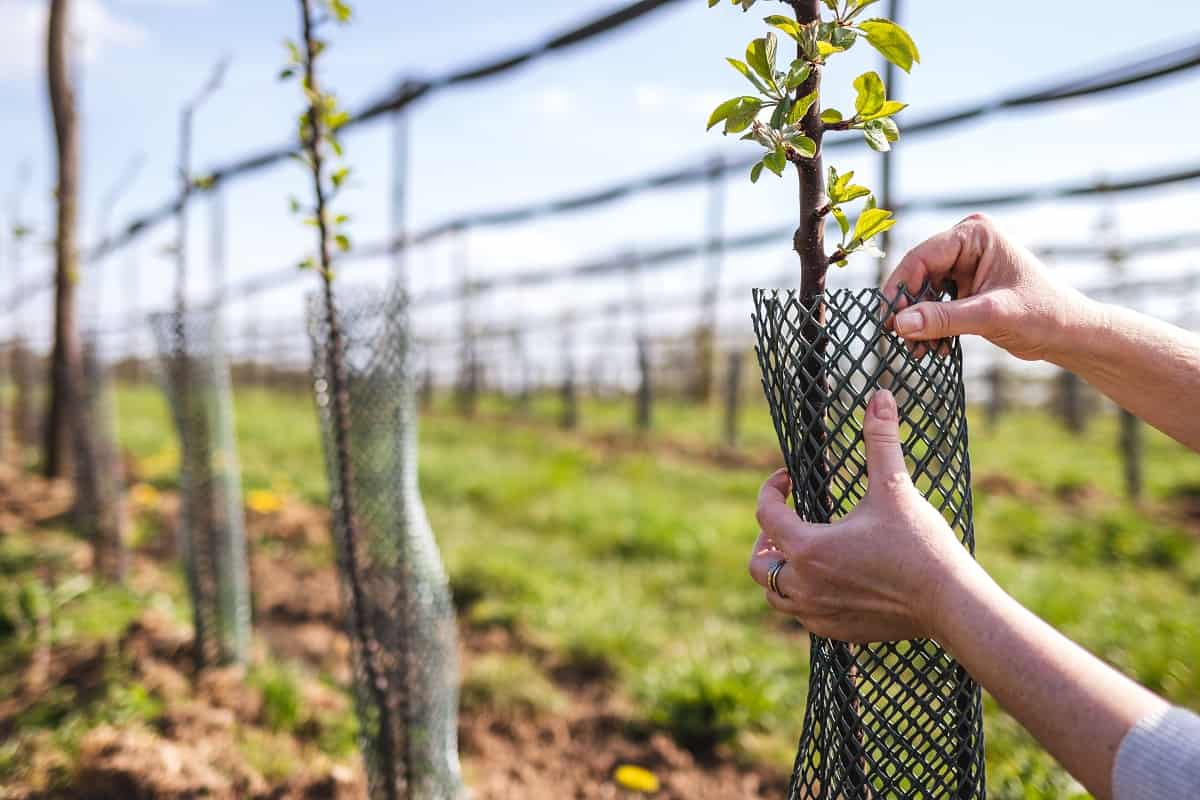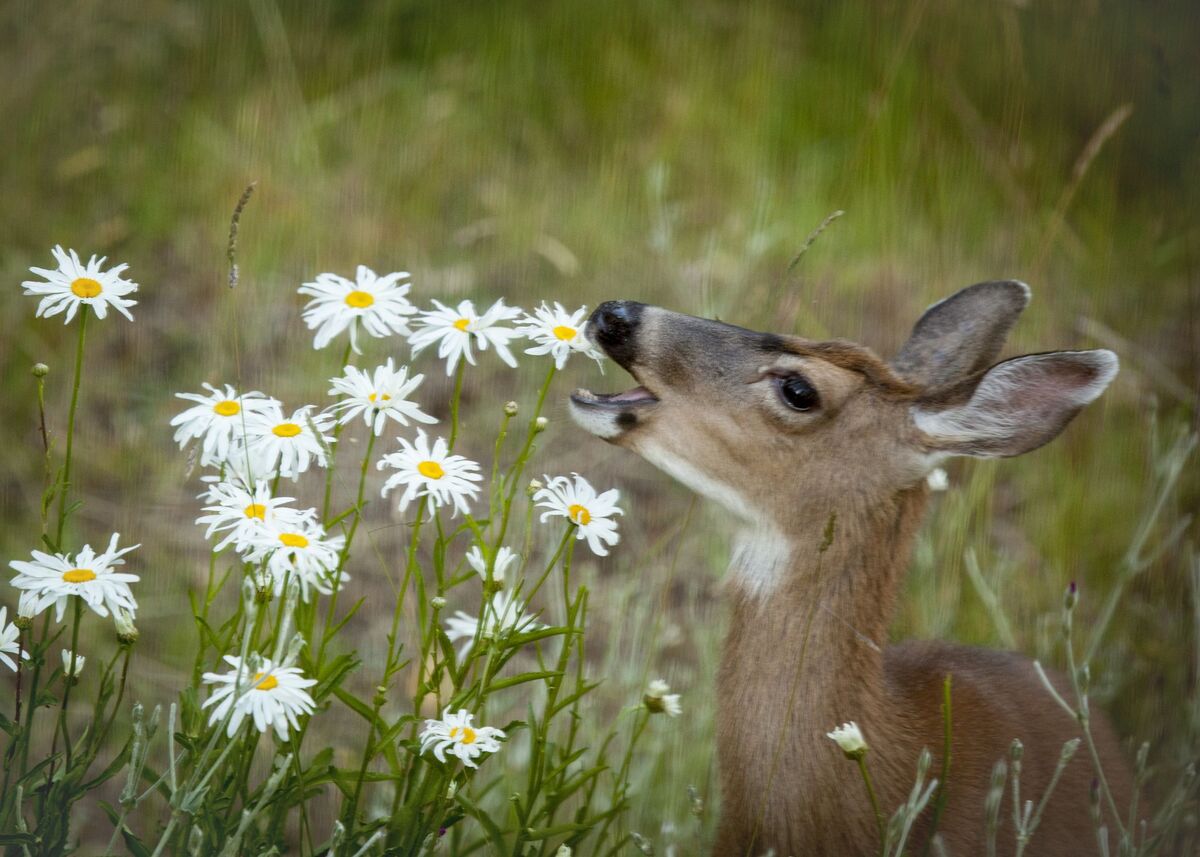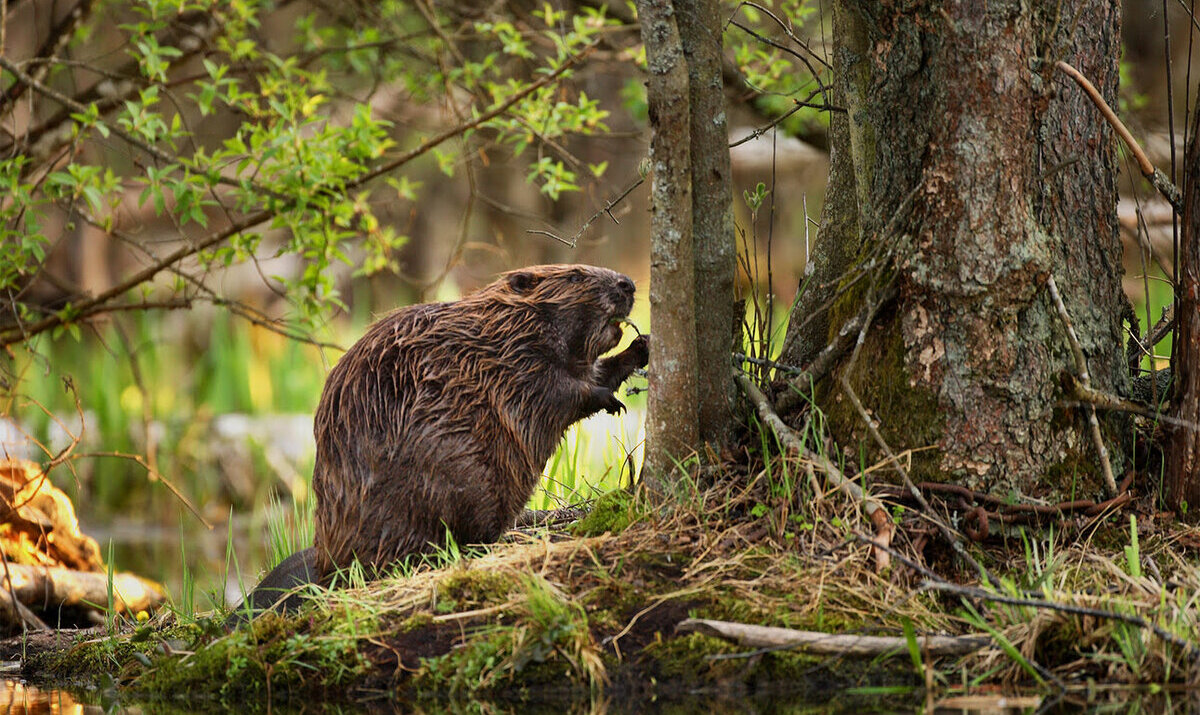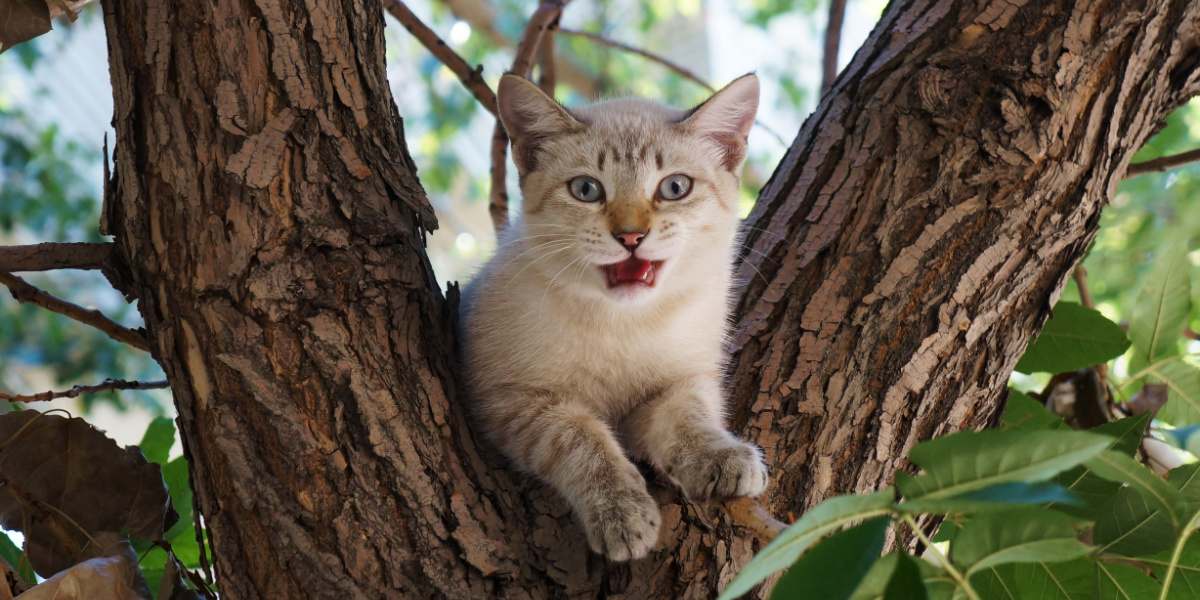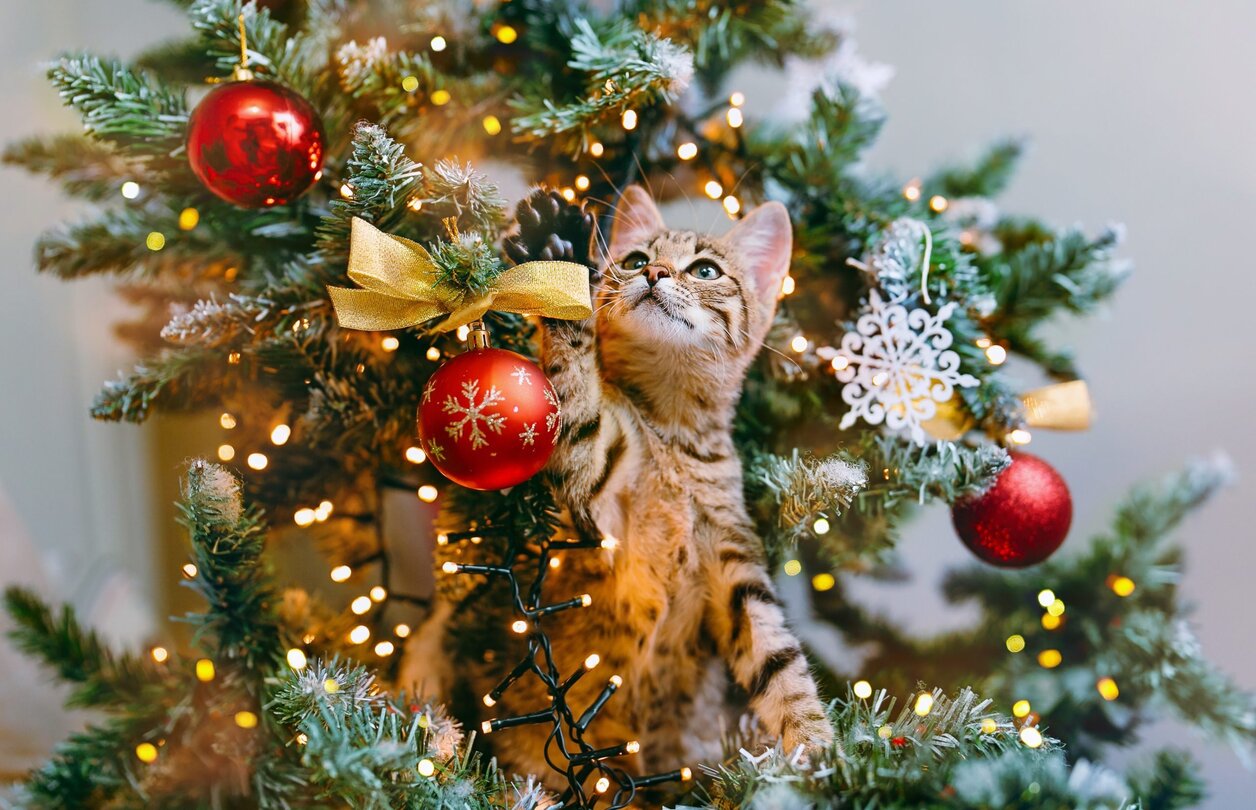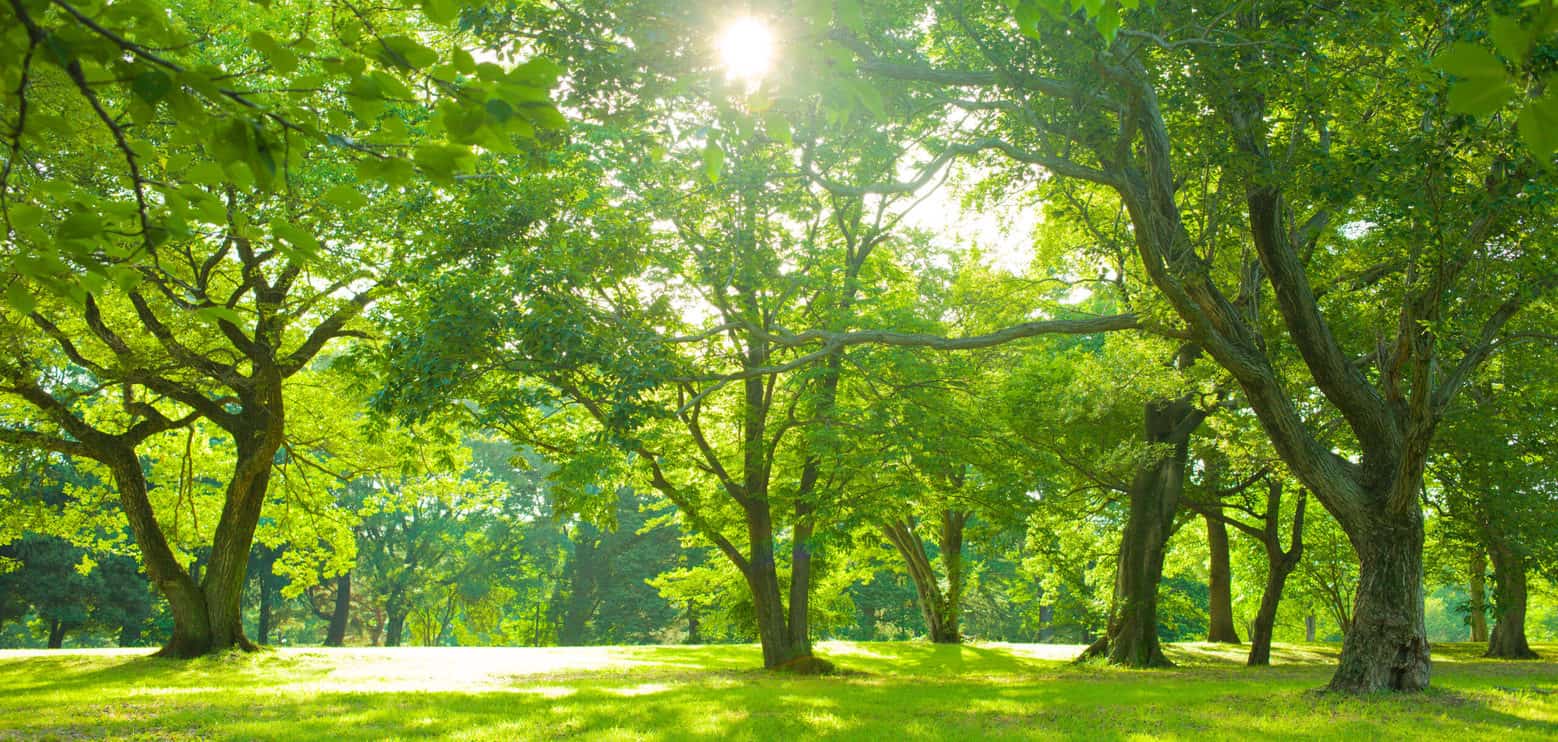Home>Gardening News and Trends>Latest News>Why Do Deer Rub Trees
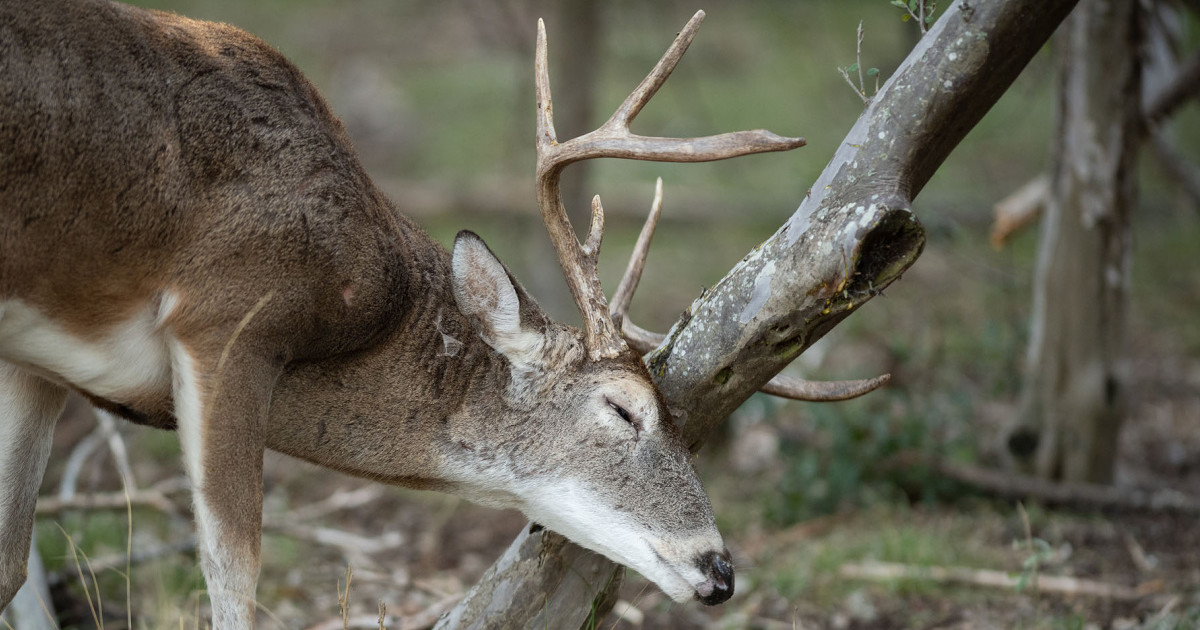

Latest News
Why Do Deer Rub Trees
Published: November 13, 2023
Discover the latest news on why deer rub trees, including the reasons behind this behavior and its importance in their natural habitat. Stay informed with our informative article.
(Many of the links in this article redirect to a specific reviewed product. Your purchase of these products through affiliate links helps to generate commission for Chicagolandgardening.com, at no extra cost. Learn more)
Table of Contents
Introduction
Deer are intriguing creatures that capture the imagination of both nature enthusiasts and hunters alike. With their graceful movements and majestic antlers, they symbolize the beauty of the wilderness. One of the fascinating behaviors exhibited by deer is tree rubbing. This behavior involves deer rubbing their antlers against trees, leaving behind visible marks and scents. But why do deer engage in this peculiar activity?
Tree rubbing, also known as “buck rubbing,” is a behavior commonly observed in male deer, particularly during the rutting season. This behavior serves several purposes, including communication, scent marking, social interaction, and even exercise.
Understanding the reasons behind tree rubbing can provide valuable insights into the behavior and biology of deer. It sheds light on their social dynamics, territoriality, and ecological adaptations. In this article, we will delve into the fascinating world of deer tree rubbing and explore the various factors that contribute to this behavior.
So, why do deer rub trees?
The Purpose of Tree Rubbing
Tree rubbing plays a crucial role in deer behavior and serves multiple purposes. One of the primary reasons deer engage in tree rubbing is to establish their presence and territory. Male deer, known as bucks, use tree rubbing as a way to mark their territory and assert their dominance. By leaving their scent on trees, they send a clear message to other bucks in the area.
Tree rubbing also serves as a form of communication among deer. The scent left behind on the trees contains pheromones, which carry important information about the buck’s age, size, and reproductive status. This communication helps other deer in the area understand the presence of a dominant buck and avoid potential conflicts.
In addition to territorial and communicative purposes, tree rubbing serves as a way for bucks to strengthen their neck muscles. During the rutting season, bucks engage in intense battles to compete for mates. The act of rubbing their antlers against trees allows them to strengthen their neck muscles, which are essential for fighting and asserting dominance.
Furthermore, tree rubbing can also serve as a form of stress relief for bucks. The rutting season can be a time of heightened aggression and tension, and engaging in tree rubbing helps bucks release some of that pent-up energy and frustration. It provides them with a physical outlet to channel their energy and reduce any potential aggression towards other deer.
Overall, the purpose of tree rubbing in deer is multifaceted – it serves as a territorial marker, a form of communication, a means of strengthening neck muscles, and a stress-relieving behavior. By engaging in tree rubbing, bucks establish their dominance, communicate vital information to other deer, and maintain their physical well-being in preparation for the rigors of the rutting season.
Physical Characteristics of Tree Rubs
Tree rubs left behind by deer exhibit certain physical characteristics that can provide valuable insights into the behavior and biology of these remarkable animals. The appearance and features of tree rubs can vary depending on various factors, including the size and strength of the buck.
One of the primary physical characteristics of tree rubs is the height at which they occur. Buck rubs are typically found at a height ranging from three to six feet above the ground. This is the perfect height for bucks to exert their strength and leave behind visible marks on the tree trunk. The height of tree rubs can also indicate the size and dominance of the buck, as larger and more dominant bucks can reach higher on the trunk than their smaller counterparts.
Another physical characteristic of tree rubs is the width and depth of the marks left behind. Bucks use their antlers to scrape against the tree bark, removing layers of outer bark and exposing the inner wood. The width and depth of the rub can vary depending on the strength and force exerted by the buck. Deep and wide rubs are often indicative of a larger and more powerful buck, while shallow and narrow rubs may suggest a younger or less dominant buck.
Additionally, the direction and angle of the tree rub can also provide important insights. Bucks tend to rub trees in an upward motion, starting from the base of the tree and moving towards the top. The angle of the rub can indicate the natural movement of the deer’s body as it exerts force on the tree. This information can help researchers and wildlife enthusiasts understand the precise motion and force exerted by bucks during their tree rubbing behavior.
It’s important to note that the appearance and physical characteristics of tree rubs can vary depending on the tree species and the specific location. Trees with smooth bark, such as beech or birch, may show more pronounced and visible marks compared to trees with rough bark, like oak or pine. Environmental factors such as moisture, sun exposure, and the age of the rub can also affect the appearance and longevity of tree rubs.
By studying the physical characteristics of tree rubs, researchers can gain valuable insights into the behavior and biology of deer. These characteristics provide clues about the size, dominance, and strength of bucks, as well as their territorial marking patterns and overall health. Understanding the physical attributes of tree rubs contributes to our knowledge of deer behavior and helps us appreciate the complexities of their fascinating world.
Scent Marking and Communication
Scent marking plays a crucial role in deer communication, and tree rubbing is one of the ways deer engage in this form of olfactory communication. By rubbing their antlers on trees, deer leave behind unique scent markers that convey essential information to other deer in the area.
The scent left behind on tree rubs contains pheromones, which are chemical compounds that carry specific messages. These pheromones can provide vital information about the buck’s age, reproductive status, and overall health. Other bucks can detect and interpret these scents, allowing them to gather information about potential rivals and assess their own chances of successfully competing for mating opportunities.
Tree rubbing and scent marking also serve as a means of communication between bucks and does. Bucks use the scent markers on tree rubs to indicate their presence, dominance, and readiness to breed. By leaving their scent behind, bucks can attract does and signal to them that they are in their territory and ready to mate. Does, in turn, can evaluate the quality and dominance of the bucks based on the scent markers they encounter.
Furthermore, scent marking through tree rubbing helps establish a hierarchy among bucks. Dominant bucks typically leave more prominent and frequent rub marks on trees, signaling their authority and dominance over a territory. Other bucks can interpret these markings as a clear indication of a dominant presence, thus avoiding direct confrontations and potential fights.
It’s worth noting that deer have an exceptionally acute sense of smell. They can discern and analyze subtle differences in scent composition, allowing them to gather intricate information about their environment and the other deer in it. This heightened sense of smell is what enables deer to detect and interpret the scent markers left behind on tree rubs.
Overall, tree rubbing and the associated scent marking are essential components of deer communication. By leaving scent markers on trees, bucks can convey vital information about their dominance, reproductive status, and overall health. These scent signals help establish a hierarchy, attract potential mates, and avoid unnecessary conflicts among deer in a specific area. The communication through scent marking is a fascinating aspect of deer behavior that continues to intrigue researchers and wildlife enthusiasts alike.
Social and Dominance Behavior
Deer, particularly male bucks, exhibit fascinating social and dominance behaviors, many of which are connected to tree rubbing. Through tree rubbing, deer establish their social hierarchies and assert their dominance within their respective territories.
Tree rubbing serves as a visual display of dominance among bucks. The size, depth, and frequency of tree rubs can provide valuable insights into the dominance level of a buck. Larger and more dominant bucks tend to create more extensive and heavily marked tree rubs compared to smaller or subordinate bucks.
Tree rubbing also acts as a form of communication and interaction between bucks. When multiple bucks inhabit the same area, tree rubs can serve as a means of asserting dominance and avoiding direct confrontations. Bucks can assess the markings left by other bucks, thus gaining information about their competitors’ size and strength without engaging in physical altercations.
Deer, especially during the rutting season, engage in ritualistic behaviors associated with dominance and courtship. The act of tree rubbing is often accompanied by other behaviors such as antler displays, grunting, and chasing. These behaviors further reinforce the social hierarchy among bucks and contribute to the selection of mates.
It’s crucial to note that dominance and social behaviors among deer can shift and change. As the rutting season progresses, bucks may engage in aggressive encounters to establish dominance and secure mating opportunities. Tree rubbing plays a role in this process, as bucks use it to communicate their dominance and readiness to breed.
Additionally, social behavior extends beyond interactions between bucks. Does also play a role in the social dynamics of deer populations. They may be attracted to the scent markers left behind on tree rubs and use them to select prospective mates. Bucks that exhibit more prominent and frequent tree rubbing behaviors are more likely to be perceived as dominant and desirable by does.
Overall, social and dominance behaviors are intricately linked to tree rubbing in deer. Through tree rubbing, bucks establish their dominance, communicate with other deer, and attract potential mates. The visual and olfactory cues left behind on tree rubs serve as important elements in the social dynamics and reproductive strategies of deer populations.
Seasonal Patterns of Tree Rubbing
Tree rubbing in deer exhibits distinct seasonal patterns that coincide with their reproductive cycle and environmental factors. Understanding these seasonal patterns can provide valuable insights into the behavior and biology of deer.
The rutting season, also known as the breeding season, is a crucial period for tree rubbing. During this time, which typically occurs in the fall, male bucks become more active in marking their territories and attracting potential mates. Tree rubbing intensifies as bucks seek to assert their dominance and communicate their readiness to breed.
As the rutting season progresses, tree rubbing becomes more frequent and pronounced. Bucks engage in territorial disputes and use tree rubbing as a way to display their dominance and attract does. The combination of visual and olfactory cues on tree rubs serves as a powerful signal to other deer about the presence of a dominant buck and the availability of potential mates.
Environmental factors also play a role in seasonal tree rubbing patterns. In areas with distinct seasons, such as temperate regions, tree rubbing tends to increase during the pre-rut and rutting season. The decrease in daylight and the onset of cooler temperatures stimulate the hormonal changes in deer, leading to an increase in rubbing behavior.
It’s important to note that the seasonal patterns of tree rubbing may vary slightly based on geographic location and deer population density. In areas with high deer densities, tree rubbing may be more prevalent due to increased competition for limited resources and mating opportunities.
The timing and duration of the rutting season and tree rubbing behavior also differ between deer species. For example, white-tailed deer typically exhibit peak rutting activity and tree rubbing in November and December, while mule deer tend to experience their rutting season earlier, usually in October.
Overall, tree rubbing in deer follows distinct seasonal patterns that align with their reproductive cycle and environmental factors. The rutting season triggers an increase in tree rubbing behavior as bucks assert their dominance and communicate their readiness to breed. Monitoring these seasonal patterns can provide valuable information about the breeding ecology and behavior of deer populations, and further our understanding of their fascinating and complex lives.
Environmental Factors Affecting Tree Rubbing
Tree rubbing behavior in deer is influenced by various environmental factors that shape their habitat and availability of resources. These factors can significantly impact the frequency, intensity, and timing of tree rubbing occurrences.
One of the key environmental factors affecting tree rubbing is the availability and quality of suitable trees. Deer prefer to rub trees with sturdy trunks, such as hardwoods like oak or maple, which can withstand the pressure exerted by their antlers. The presence of these preferred tree species in an area can increase the likelihood of tree rubbing behavior.
Vegetation density and structure also play a role in tree rubbing. In areas with dense undergrowth or thick vegetation, deer may encounter challenges when attempting to access trees for rubbing. As a result, they may modify their rubbing behavior or seek out alternative rubbing sites, such as saplings or shrubs.
The abundance of deer populations in an area can also influence tree rubbing behavior. Higher densities of deer can lead to increased competition for resources, including suitable rubbing trees. This competition may result in more frequent and intense tree rubbing behavior as bucks try to assert their dominance and secure their territories.
Seasonal variations, including changes in temperature and daylight hours, can also impact tree rubbing. Cooler temperatures and shorter days during the fall and winter months can trigger hormonal changes in deer, signaling the onset of the rutting season and leading to an increase in tree rubbing behavior.
Additionally, environmental factors such as human disturbance can affect tree rubbing behavior in deer. Increased human activity, such as hunting pressure or habitat alteration, can disrupt deer populations and their normal behaviors. This disturbance may lead to changes in tree rubbing patterns, with deer altering their behavior to avoid areas with high human presence.
Moreover, the availability and distribution of food resources can influence the frequency and intensity of tree rubbing. Deer require a balanced and nutritious diet to maintain their health and antler growth. A lack of sufficient food resources can result in weakened deer, potentially impacting their tree rubbing behavior.
Overall, environmental factors such as tree availability, vegetation density, deer population density, seasonal variations, human disturbance, and food resources all contribute to the complex dynamics of tree rubbing behavior in deer. Understanding these environmental influences helps researchers and wildlife enthusiasts gain insights into the adaptability and resilience of deer populations in different habitats.
Tree Rubbing as a Form of Exercise
Tree rubbing in deer serves more than just territorial and communication purposes. It also functions as a form of exercise for these magnificent creatures. Deer engage in tree rubbing as a way to strengthen their neck muscles and prepare themselves for the physical demands of the rutting season and other challenging activities.
During the rutting season, male bucks engage in fierce battles to establish dominance and compete for mates. These fights often involve intense pushing and shoving matches, where the strength and agility of the neck muscles play a crucial role. Tree rubbing provides a natural and effective way for bucks to exercise and strengthen their neck muscles in preparation for these confrontations.
When bucks rub their antlers against trees, they exert significant force and resistance. This action engages the muscles in their neck, including the powerful neck extensors and flexors, which are responsible for the forceful movements necessary during fighting and dominance displays.
The act of tree rubbing also allows bucks to improve their coordination and balance. As they navigate the tree trunk and position their antlers, they must carefully calculate their movements to avoid injury or disorientation. This can enhance their spatial awareness and overall motor skills, enabling them to perform more effectively during fights and other physical challenges.
Additionally, the physical exertion involved in tree rubbing can provide cardiovascular benefits to deer. The repeated rubbing motions and the energy expended in this activity can elevate their heart rate and increase blood circulation, promoting overall cardiovascular fitness.
Tree rubbing as a form of exercise is not exclusive to the rutting season. Deer may engage in tree rubbing throughout the year, particularly during times of heightened energy or when they need to relieve stress. This exercise-like behavior allows deer to maintain their physical well-being, even outside of the breeding period.
Moreover, tree rubbing as a form of exercise is not limited to bucks. Female deer, known as does, may also partake in tree rubbing activities. While bucks may be engaged in tree rubbing primarily for dominance and competition, does may utilize it as a means to stretch their muscles, alleviate itchiness, or simply enjoy the physical activity.
Overall, tree rubbing serves as a natural form of exercise for deer, particularly bucks. By strengthening their neck muscles, improving coordination, and promoting cardiovascular fitness, tree rubbing prepares deer for the physical challenges they face during the rutting season and other demanding activities throughout the year.
Conclusion
Tree rubbing in deer is a fascinating behavior that serves multiple purposes in their lives. It functions as a territorial marker, a form of communication, a display of dominance, a means of exercise, and a way to strengthen neck muscles. Through tree rubbing, deer assert their dominance, communicate vital information, establish social hierarchies, and prepare themselves for the rigors of the rutting season and other physical challenges.
The physical characteristics of tree rubs provide insights into the size, strength, and dominance of bucks, allowing researchers and wildlife enthusiasts to better understand deer behavior and biology. The scent markers left behind on tree rubs facilitate communication among deer, conveying information about reproductive status, age, and health status.
Seasonal patterns of tree rubbing coincide with the rutting season, signaling increased activity as bucks compete for mates. Environmental factors, such as tree availability, vegetation density, deer population density, and food resources, impact the occurrence and intensity of tree rubbing behavior. Understanding these factors helps us appreciate the adaptability of deer populations to different habitats.
Furthermore, tree rubbing serves as a form of exercise for deer, allowing them to strengthen their neck muscles, improve coordination, and promote cardiovascular fitness. It prepares bucks for territorial disputes and other physically demanding activities, while also providing a means of stress relief.
Deer tree rubbing is a captivating behavior that showcases the intricacies of their social interactions, dominance displays, and physical adaptations. By studying and appreciating tree rubbing, we gain a deeper understanding of these remarkable creatures and the delicate balance of nature in which they exist.
